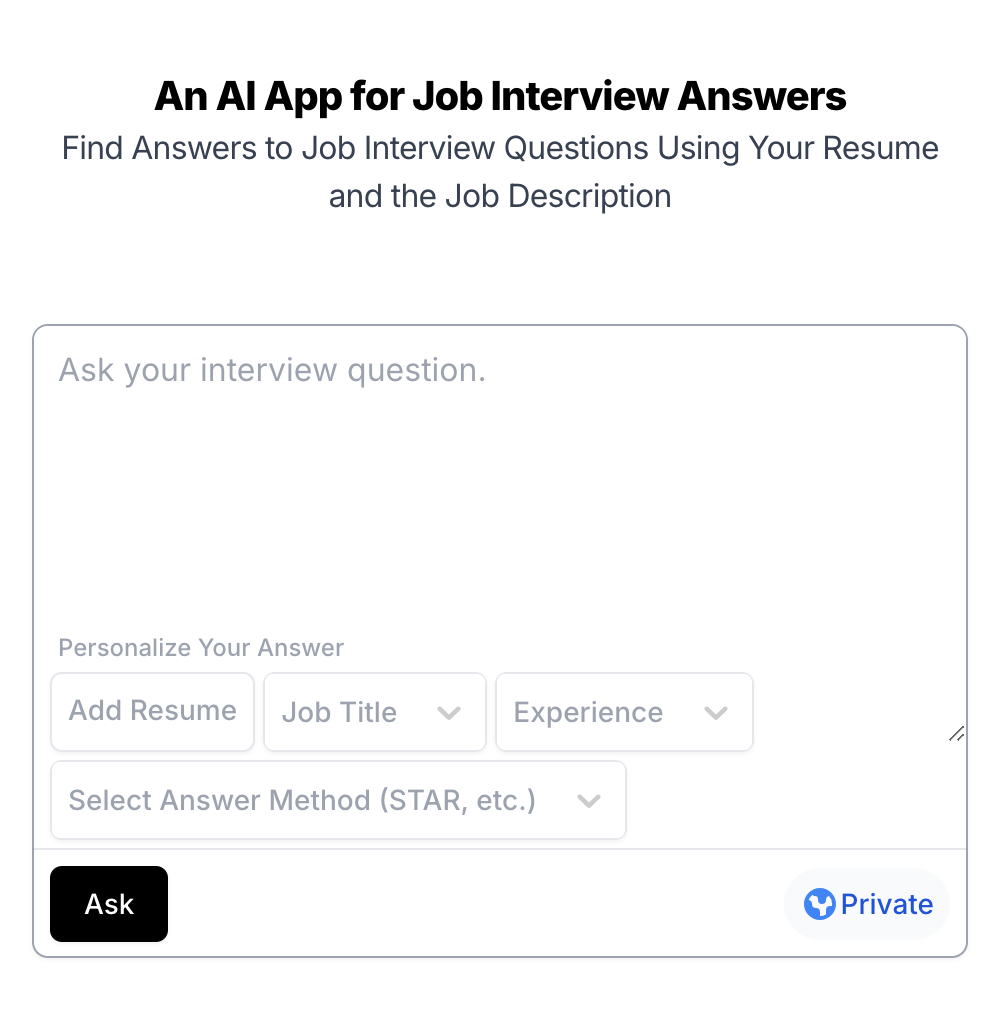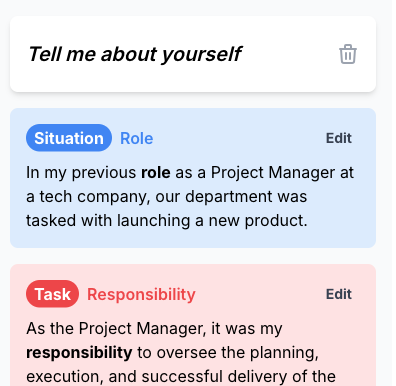
Guide to What is the PAR Answer Format in Job Interviews?
Thu Sep 05 2024•Author: InterviewPro AI
Table of Contents
- What is the PAR Format?
- How to Structure Your PAR Answer
- Examples of PAR Format Answers
- How Long Should Your Answer Be?
- What Not to Say in Your Answer
- Common Mistakes to Avoid
- When Are These Questions Asked?
- Who Asks This Question?
- How Important Are These Questions?
- When to Use the PAR Format
- Tips for Mastering the PAR Format
What is the PAR Format?
The PAR format, which stands for Problem, Action, Result, is a structured method for answering behavioral interview questions. It's a way to organize your responses to provide clear, concise, and compelling examples of your problem-solving skills and experiences.
How to Structure Your PAR Answer
- Problem: Describe the challenge or situation you faced
- Action: Explain the specific steps you took to address the problem
- Result: Share the outcomes of your actions and what you achieved
Examples of PAR Format Answers
Example 1: Time Management
-
Problem: "In my previous role, our team was consistently missing project deadlines, causing client dissatisfaction."
-
Action: "I implemented a new project management software and trained the team on effective time-blocking techniques."
-
Result: "We improved our on-time project completion rate from 60% to 95% within three months, significantly increasing client satisfaction."
Example 2: Customer Service
-
Problem: "Our company was receiving an increasing number of customer complaints about product quality."
-
Action: "I initiated a quality control task force and personally reviewed our manufacturing process."
-
Result: "We identified and fixed three key issues in our production line, reducing customer complaints by 70% and increasing our product rating from 3.2 to 4.8 stars."
How Long Should Your Answer Be?
When using the PAR format, aim to keep your answer concise and focused. A good PAR answer typically lasts about 1-2 minutes. This allows you to provide enough detail without losing the interviewer's attention. Practice timing your responses to ensure you can cover all three elements (Problem, Action, Result) within this timeframe.
What Not to Say in Your Answer
When using the PAR format, avoid:
- Discussing problems without clear resolutions
- Focusing too much on the problem and not enough on your actions
- Exaggerations or false information
- Using examples where you weren't directly involved in the solution
- Providing vague or general statements instead of specific details
Common Mistakes to Avoid
- Not clearly defining the problem or its significance
- Failing to explain your specific role in solving the problem
- Omitting quantifiable results or impacts
- Using hypothetical situations instead of real examples
- Not tailoring your answer to the job you're applying for
When Are These Questions Asked?
PAR format answers are typically used for behavioral interview questions, which can be asked at various stages of the interview process:
- During initial phone screenings
- In first-round interviews
- During second or final interviews
- In panel interviews
- As part of assessment center exercises
These questions are often interspersed throughout the interview, but some interviewers may have a dedicated section for behavioral questions.
Who Asks This Question?
Various individuals involved in the hiring process may ask questions requiring PAR format answers:
- HR representatives
- Hiring managers
- Department heads
- Potential team members
- Senior executives (for higher-level positions)
- External recruiters
The specific person asking the question may tailor it to their area of concern or expertise within the company.
How Important Are These Questions?
Questions requiring PAR format answers are crucial in the interview process because:
- They provide concrete examples of your problem-solving skills
- They help interviewers predict your future performance based on past behavior
- They allow you to showcase your initiative and decision-making abilities
- They give insight into your ability to handle challenges and drive results
- They help differentiate you from other candidates with similar qualifications
When to Use the PAR Format
Use the PAR format when answering behavioral questions such as:
- "Tell me about a time when you faced a significant challenge at work..."
- "Give an example of a problem you solved..."
- "Describe a situation where you had to overcome an obstacle..."
Tips for Mastering the PAR Format
- Prepare several PAR stories before the interview
- Keep your answers concise, aiming for 1-2 minutes per response
- Practice your PAR answers with a friend or mentor
- Tailor your examples to the job requirements
- Be honest and use real situations from your experience
- Focus on quantifiable results whenever possible
Can't find what you're looking for?
Try our AI-Powered Interview Preparation Tools
Prepare for your job interview with our AI tools. Tailored answers, custom questions, and STAR method responses.


